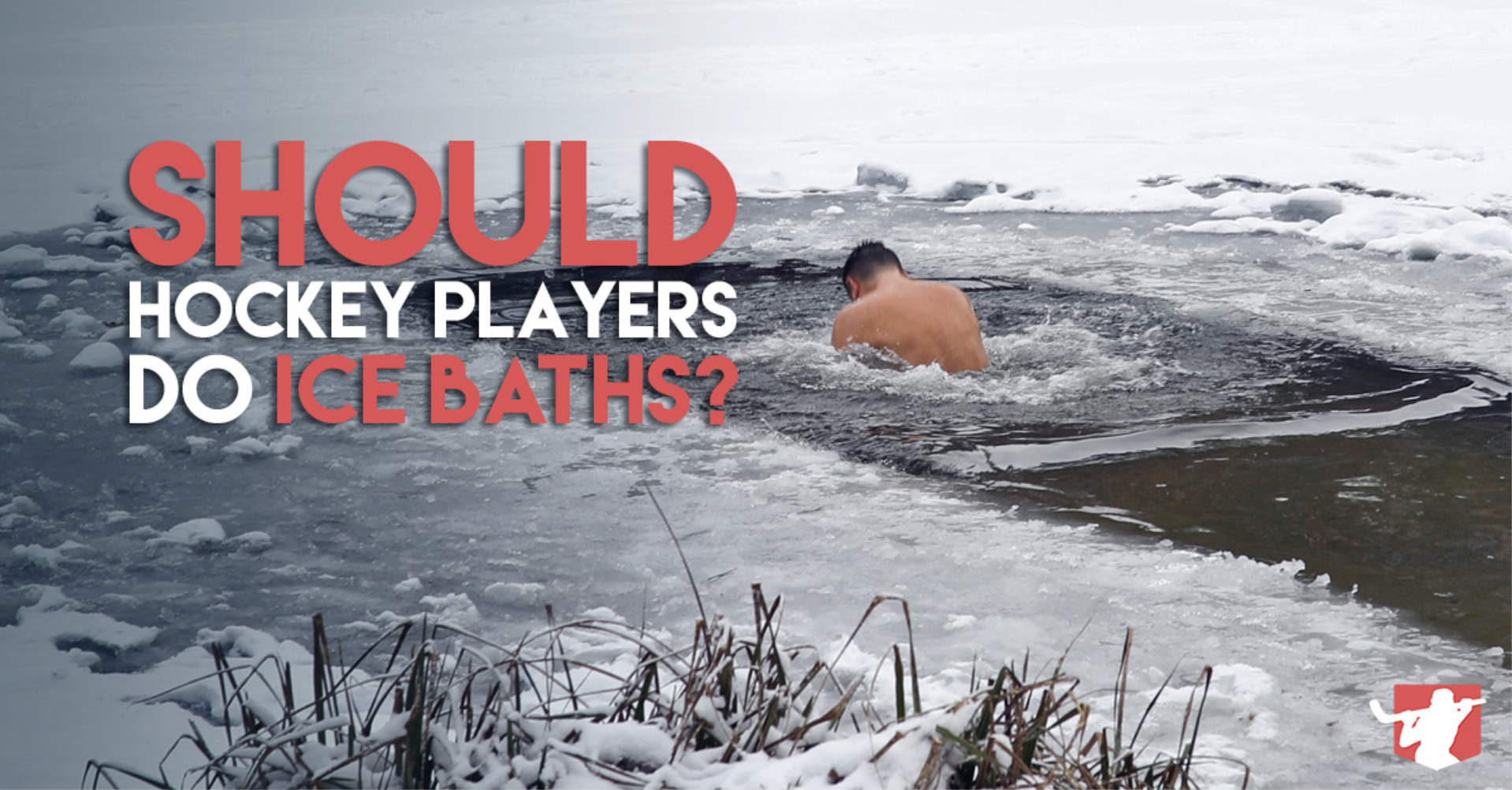In this article, I want to answer the question of:
Should hockey players take ice baths for recovery?
The truth is that recovery is a wildly important component towards hockey performance, I have been an advocate of that since Day 1 at HockeyTraining.com and will always be.
You can’t be your best if you aren’t recovering properly, period.
There are a ton of hockey athletes out there who train at a level of intensity that should get them results, but, they never end up even getting half of the results that they were expecting because they didn’t have the recovery strategies in place to maximally adapt from the training stimulus that they were applying in the gym.
Recovery is literally half of the battle, it’s not enough to just get on a good training program.
Many hockey athletes know this so they jump at things like ice baths…
The problem here is that although “recovery” is something that can be done in many ways, like most things in strength and conditioning, there is a right way and a wrong way to approach it.
Let’s examine ice baths and pin down a recommendation that you can use for the rest of your hockey career.
The Sports Science Theory Behind Ice Baths
Although it’s most widely known as just “getting in an ice bath” — this is actually an area that has been researched quite heavily and is more accurately known as Cold Water Immersion (CWI).
The primary rationale for an athlete to immerse their body into cold water is based on something known as “hydrostatic pressure” and the overall cooling of your tissues.
Put very simply, when external pressure is applied to the body by immersing yourself in cold water, removal of exudates and inflammatory cells in enhanced, which can potentially lead to enhanced metabolic waste removal and a reduction in overall muscle soreness.
Furthermore, what most people don’t mention is that a reduction in skin temperature may also reduce the extent of the exercise-induced inflammation, reduce pain, and accelerate the rate at which your muscles recover.
Of important note, the literature seems to suggest that hydrostatic pressure is maximized if you can stand while immersed in cold water rather than sit. The difference isn’t crazy, but it is statistically significant.
What Does The Research Say?
I hate to burst your bubble, but the science on ice baths is not as conclusive as people would like to think.
Some studies demonstrate no additional benefit when compared to passive recovery on the outcomes of pain, swelling, and performance.
This is partly due to the extremes involved as it has been demonstrated that using temperatures that are too cold can have a negative effect on recovery rather than a positive effect.
The negative effect seems to occur when the water you use for your CWI is too cold (5 degrees celsius or less) which induces something known as “The Hunting Reaction” which eliminates the potential positives that CWI can offer.
A meta-analysis of 14 studies by Leeder and colleagues found that CWI had little effect on the recovery of strength, but, it was effective at improving post-exercise power output.
That may sound good and all, but unfortunately further research in this area conducted by Halson found that CWI was much more beneficial for weight training rather than athletic performance.
So, not exactly ideal for hockey athletes.
To make matters worse, ice baths also seem to be able to negate how much progress you could otherwise be making in the gym.
Recently, The Journal of Applied Physiology posted an article summarizing two must-know studies for the hockey strength and conditioning field.
Put very simply, it was found that CWI decreased the amount of strength and muscle mass you are going to gain from a 12-Week training cycle compared to your non-CWI using counterparts.
Put another way, although CWI may help you feel less sore after training, that comes at a cost of not making as many gains as you otherwise would have.
Definitely not ideal for an off-season training program, which is why I don’t recommend any of my athletes do CWI in the off-season, even if it might make them look cool on Instagram.
Final Thoughts and Recommendations
I chose my words carefully above to say that I don’t recommend using CWI specifically in the off-season.
The reason why I said that is because the off-season is in place to make major gains in strength, size, speed, conditioning, and agility — anything that is going to blunt the response we are trying to create in the gym would not be ideal because we want to make gains as fast as possible during this time.
But…
The in-season is a little bit of a different story.
Since ice baths help us not feel sore, and since the in-season is not the time to be focusing on gains (because hockey performance is #1 in importance), you can make a very good argument that CWI makes complete sense for the in-season.
Why?
Because you’re going to perform better if you’re not sore, so, if you’re in playoffs or in you have a tournament this week it actually makes very logical sense to have an ice bath after your games so that you can enter your next game not sore at all from the previous game.
Getting bigger and stronger isn’t important during these times, hockey performance is. So even though ice baths blunt training adaptations, they can help improve your performance during times of very high-frequency gameplay.
A typical ice bath recommendation would be to fill a bathtub or ice bath with cold water and add a few bags of ice to bring water temperatures between 50-55 degrees.
Sit or float in the tub completely submerging up to your neck. If you are not comfortable submerging your torso you can just submerge your legs for lower body recovery.
Ice baths should last approximately 6-8 minutes based on your comfort levels. No need to push this, there is no trophy for acting like a tough guy.
Try it out and see how this works for you, but just like all recovery modalities, care should be taken as to not over administer them. More is not better here.


Does the same thing go for contrast showers?
Yes, but not to as large of an extent since the temperatures don’t drop nearly as low.
Thanks for the article, it was a pleasure to read, and it went deeper than just saying, “helps you not feel sore.” Thanks for the insight!
Thanks Artem! I try to be as informative as possible for all the hockey players out there. Glad you enjoyed it!